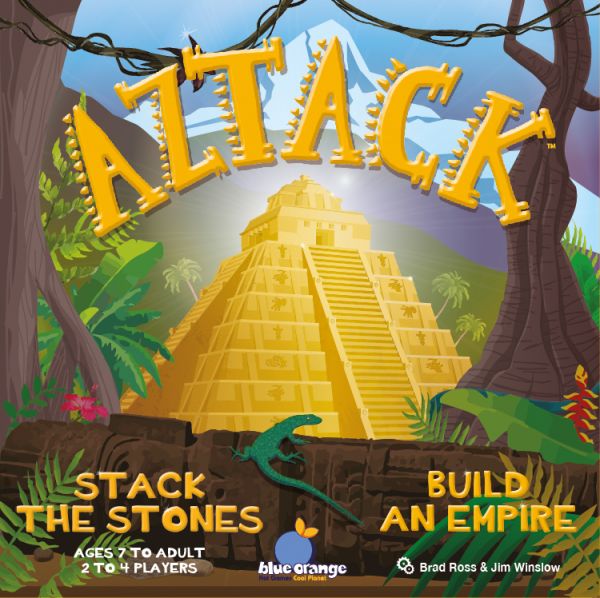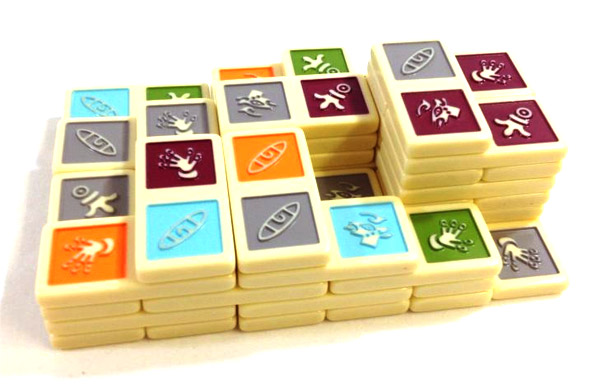Stacking Dominoes: A Review of Aztack

Aztack is a new game from Blue Orange Games that we first got a glimpse of at the ASTRA fair. It is one of many impressive new games from Blue Orange that casual gamers should definitely know about.
Gameplay
Aztack can be described as a 3D version of Dominoes. The object of the game is to get rid of the most stones from your hand. The game is set up by arranging 12 stones randomly into a 2x6 grid to form the base of an Aztec pyramid. Each player then draws 12 stones and places them face up on the table.
Players take turns placing stones onto the pyramid following valid placement rules. A stone must be placed flat (not tilted) so that it bridges 2 stones. Both sides of the stone must match either the 2 colors or the 2 glyphs underneath it. As a bonus, if a player manages to match both the colors and the glyphs, he may discard one of the stones from his hand.
The game ends when no more stones can be played and all players pass. The player with the fewest stones remaining wins!

Review
Simplicity in gameplay is what Blue Orange Games is all about. This game can be taught in almost no time at all. However, it is not lacking in tactical decisions or production value.
The fact that all players' stones are visible gives players plenty of information to decide what their best choice will be on a turn. Ideally, a stone placement should increase your own chance of placing stones (or especially scoring a bonus) on subsequent turns while decreasing the options for other players. The three-dimensional aspect of the game usually provides many different placement options, particulary toward the beginning of the game — this, combined with the amount of information available to players, makes this more of a "thinking" game than standard Dominoes.
The stones themselves are sturdy and — perhaps most importantly — they contain grooves on the bottom, which allow them to fall right into place when being stacked. This prevents a lot of fidgeting with the stack, which is a small but effective design detail.
On the downside, we felt that the glyphs depicted on the stones could be a bit more distinguishable to reduce the amount of eye strain while playing. We also felt that the end game was a bit ambiguous, since ties are not addressed and it is unclear what happens when a player runs out of stones — does he win immediately? Of course, the group can easily agree on these points during play, but some more clarity would be helpful.
Final Thoughts
Aztack is a clever abstract strategy game that has some familiarity for players who like Dominoes, yet it offers a unique twist that makes it new and exciting. We're glad to see games like this and others coming from Blue Orange Games, particularly those that are originating in France and being introduced in the U.S.
Pros: Three-dimensional play, familiar but unique, grooves on stones make stacking easy
Cons: Some of the glyphs are a bit too similar, rules are unclear for the end game
UPDATE: the rules have been revised by the publisher. The rules now state: "The first player to place his last stone wins the game. If all players are stuck with no moves remaining, the player with the fewest stones remaining wins. If there is a tie, the player who last placed a stone wins." There is also a new "Speed Stack" variant included in the rules.
Disclosure: we received a complimentary review copy of this game.







